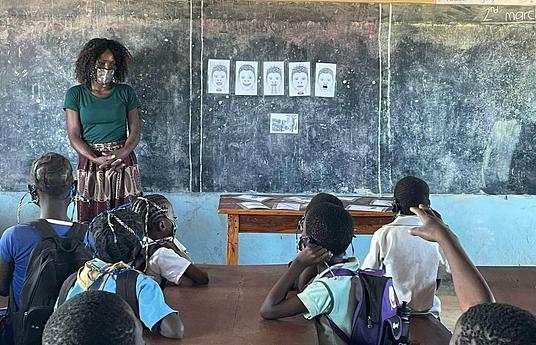In 2010, the Right to Education Act came into force, and it became the States responsibility to ensure that every single child got access to, and carried through the elementary level education (grades 1 to 8). Education, now, became compulsory. The Act also enshrined a no-detention policy, which mandated that all children should study in the grade appropriate to their age, and they should proceed to the next grade, no matter what their test results were. It was a progressive Act laying the foundation for “Quality Education for All”, but at the same time, had formidable challenges of implementation.
The Act opened up an opportunity to further develop the HPPI Out-of-School Children Program with a pathway to scale. Based on the RTE Act and “Education for all” mission, Kadam A Step-UP Program was developed which followed guidelines from the Ministry of Education (MoE) including budget allocation, time of training, the establishment of Special Training Centres, etc.
The Kadam program works towards improving the quality of life of children by providing a platform on the foundation of engaging pedagogy, targeted curriculum and teaching practices. The focus is on children who are out-of-school and need to be brought into mainstream education system, and also, on those who are in the schools and need to enhance their foundational learning to meet age appropriateness.
Kadam is an accelerated learning program designed on outlines of national frameworks. The targeted Kadam curriculum is a blend of cognitive development through enhancement of subject-based competencies and development of socio-emotional skills through real-life experiences in Thematic Learning, which caters to an all-round development of child.
To address both the domains, the program has been designed as an amalgamation of 10 Steps of foundational learning outcomes, and 11 theme headlines for experiential learning activities. Connecting with the community and generating experiences through social interactions considerably add to children’s learning.
An emphasis is made on peer learning and teamwork by encouraging children to work in small groups and, collectively as whole class. The children are organised in groups of three (trio’s) and work together throughout the year. Kadam has been found effective in multi-graded learning environments wherein children learn progressively from one concept to the next, by steering their individual learning requirements at their own pace. The toolkit for the OOSC programme consists of books and tools meant for children and teachers/education volunteers of the Special Training Centres.
Since 2014, the Kadam program has been implemented in 11 States of India - Haryana, Uttar Pradesh, Chhattisgarh, Maharashtra, Bihar, Delhi, J&K, Rajasthan, Uttarakhand, Jharkhand and Madhya Pradesh. Until January 2025, Kadam has enrolled 233,201 out-of-school children in bridge education, of which 173,412 children have been successfully mainstreamed in schools at age-appropriate level. Kadam has also been instrumental in successfully plugging the learning gaps of 164,795 primary school children in, until January 2025. The goal of Kadam has been defined for the next 5 years. By 2030, the aim is reaching scale in more than 80 districts in 8 States of India and directly impacting, at least, 2 million children with improved learning levels. Hence, justification to tag line - No Child is Left Behind!
To seek external assistance to assess Kadam processes and tools, HPPI engaged two agencies to conduct a review of the program and its tools and provide recommendations for changes.
1. Impact and Effectiveness of Kadam Step-Up Program: An Evaluation Study (2023)
Based on the Program Outcomes in the States of Haryana and Uttar Pradesh Dr. Asheesh Kumar and Dr. Prakasha Chandra Sahoo, Assistant Professors at School of Social Sciences, Jawaharlal Nehru University, New Delhi, carried out an in-depth study of the Kadam program. The study reports the salient features of the program: student’s achievement is mapped against his/her learning outcomes, assessment throughout training period after completion of each step of learning besides baseline and end-line evaluation and extensive use of technology make the program more methodical and effective.
2. Enhancing Kadam Toolkit- Review and Analysis of Competencies, Workbooks and Assessments (2024) by Educational Initiatives.
The comprehensive review of the Kadam program’s competencies, workbook exercises, and assessment papers was undertaken by the team from Educational Initiatives. The analysis focused on ensuring the alignment of competencies with educational frameworks, identifying gaps, and proposing enhancements to optimize student learning outcomes. A meticulous examination of workbook exercises evaluated their diversity, relevance, and cognitive skill development potential, suggesting improvements for more effective engagement.
Kadam has 3 Operational Models. Model-1 is CSR/Foundation funded & our team identifies target population, provides on-ground support and supervises. In Model-2, our team provides a hand-holding approach to the State where the scope of work is defined & cost is borne by the State. In Model-3, we work as advisory, providing program module and capacity building. Reach out to us at HPPI, New Delhi.



